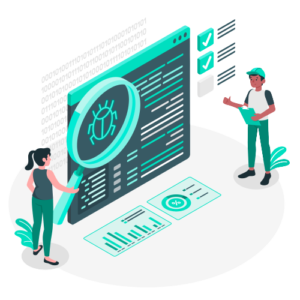Start Your Career by Learning Manual Software Testing

Manual Software Testing Module
Course Module: Manual Software Testing Fundamentals
Module 1: Introduction to Software Testing
- Understanding the Role of Software Testing in Software Development Lifecycle (SDLC)
- Overview of Software Testing Concepts and Principles
- Types of Software Testing: Functional Testing, Non-Functional Testing, etc.
- Importance of Manual Testing in the Testing Process
Module 2: Software Testing Techniques and Methodologies
- Introduction to Software Testing Techniques: Black Box Testing, White Box Testing, Grey Box Testing
- Understanding Testing Methodologies: Waterfall, Agile, and DevOps
- Overview of Test Levels: Unit Testing, Integration Testing, System Testing, Acceptance Testing
- Test Planning and Strategy Development for Manual Testing Projects
Module 3: Test Case Design and Documentation
- Understanding Test Case Design Techniques: Equivalence Partitioning, Boundary Value Analysis, Decision Tables, etc.
- Creating Test Cases and Test Scenarios for Software Applications
- Documenting Test Cases: Test Case Templates, Test Case Description, Preconditions, Test Steps, Expected Results, etc.
- Managing Test Case Repository and Version Control
Module 4: Test Execution and Reporting
- Executing Test Cases and Test Scenarios in Manual Testing
- Recording Test Results: Pass, Fail, or Blocked
- Capturing Screenshots and Logs for Defect Reporting
- Generating Test Execution Reports and Metrics
Module 5: Defect Management and Tracking
- Identifying Defects and Issues in Software Applications
- Logging Defects in Defect Tracking Tools: JIRA, Bugzilla, etc.
- Reproducing and Verifying Defects for Validation
- Communicating Defect Status and Resolution with Stakeholders
Module 6: Regression Testing and Test Maintenance
- Understanding Regression Testing and its Importance in Software Maintenance
- Performing Regression Testing: Re-executing Test Cases to Validate Changes
- Managing Test Suites and Test Scripts for Regression Testing
- Implementing Regression Testing Best Practices
Module 7: Exploratory Testing Techniques
- Introduction to Exploratory Testing
- Implementing Exploratory Testing Sessions
- Documenting Exploratory Test Sessions: Notes, Observations, and Findings
- Incorporating Exploratory Testing into Test Plans
Module 8: User Acceptance Testing (UAT)
- Understanding User Acceptance Testing and its Objectives
- Planning and Preparing for User Acceptance Testing
- Conducting User Acceptance Testing Sessions with End Users
- Incorporating User Feedback into Testing Process
Module 9: Testing Tools and Utilities
- Overview of Testing Tools for Manual Testing: Test Management Tools, Defect Tracking Tools, etc.
- Introduction to Screen Capture Tools, Browser Developer Tools, and Debugging Utilities
- Leveraging Utilities for Log Analysis, Performance Monitoring, and Security Testing
Module 10: Best Practices and Emerging Trends in Manual Testing
- Implementing Best Practices for Effective Manual Testing
- Adapting to Emerging Trends in Software Testing: AI in Testing, Shift-Left Testing, Shift-Right Testing, etc.
- Continuous Learning and Improvement in Manual Testing Practices
Each module will include hands-on exercises, case studies, and assessments to reinforce learning and practical application of manual software testing concepts.
- 1 to 1.5 Month
- Weekdays : Mon to Fri ( 1hr/day )
- Weekend: 2hrs/day
- Flexible Time
- Free Session Videos
- Course Completion Certificate
- Lifetime Customer Support
- Helping to Get a Job
- Resume Preparation




